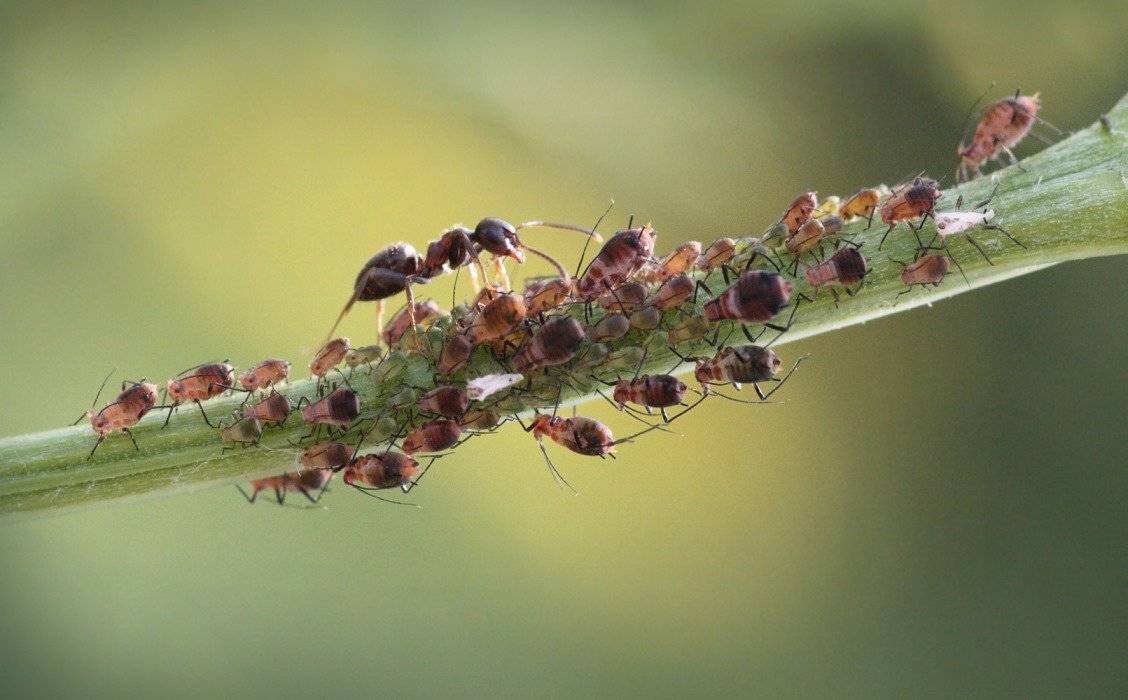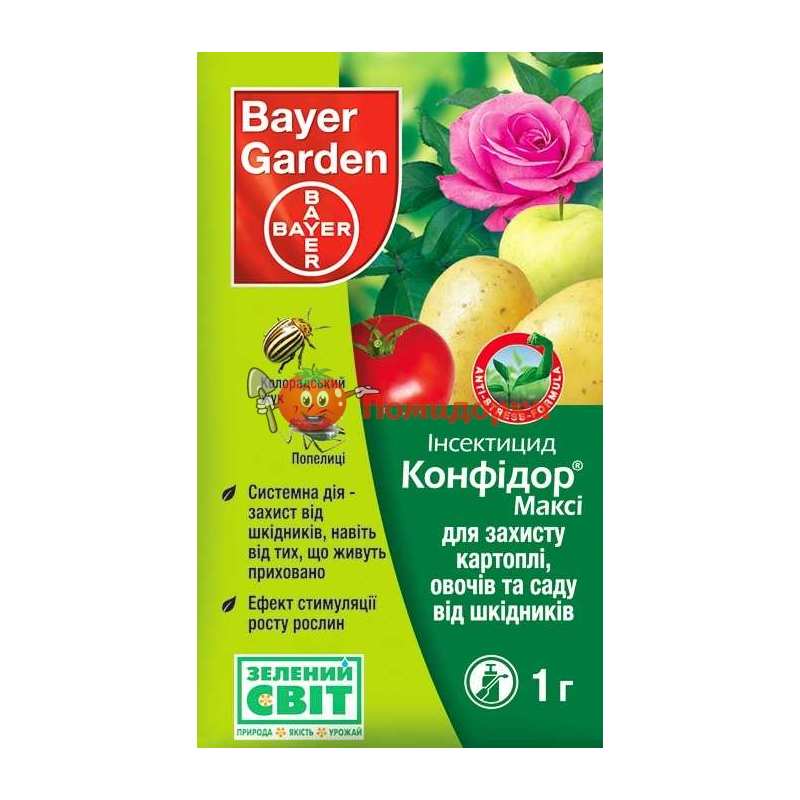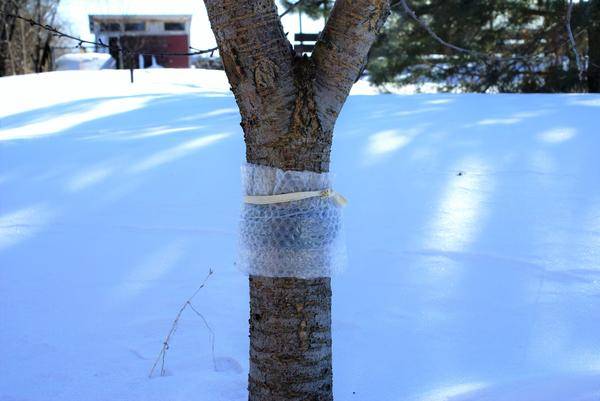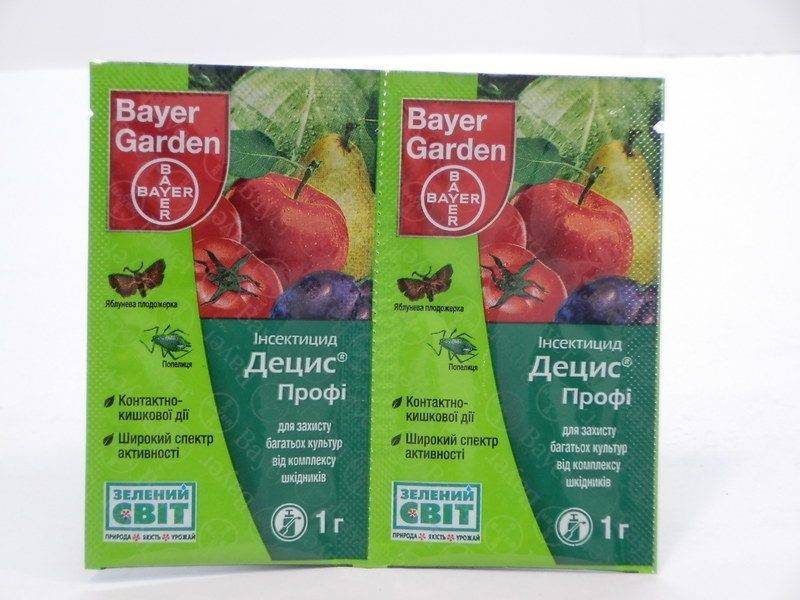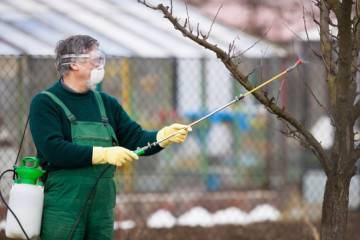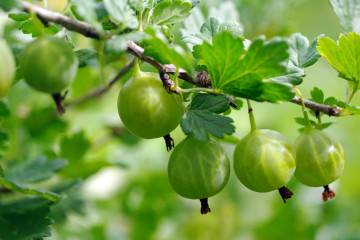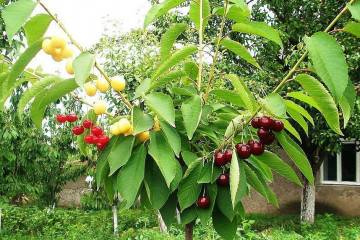How to deal with aphids on fruit trees
Content:
- Why is garden aphid dangerous?
- How to treat trees from aphids
- Folk remedies
- Chemical ways to protect the garden from aphids
- Biological methods
- Mechanical methods
- Spraying and treating trees in spring from pests and diseases
- How to spray fruit trees in spring
- How to reduce the risk of plant infestation with parasitic insects
- How to protect trees from ants
- How to whitewash trees in spring
Aphids are considered the most malicious pest of fruit trees. In the spring months, insects quickly spread along young perennial shoots or on the underside of leaf plates. The pest population appears at lightning speed, so it is important to identify them as soon as possible and take the necessary measures. How to deal with aphids on fruit trees?
Why is garden aphid dangerous?
Unfortunately, it is extremely difficult to notice the invasion of pests quickly. Until the gardener discovers insects, they will have time to seriously harm the fruit tree. To maintain normal life, aphids need a lot of moisture.
Using the proboscis, the insect pierces the soft tissue of a leaf plate or bud. In the affected plants, the metabolic process is disturbed, the access of the amino acid to the damaged areas is completed, and the following are also observed:
- twisting of leaf plates and their early abscission;
- deformation of the tips of the shoots;
- the formation of growths on the stem;
- oppression of culture;
- shedding of ovaries and buds;
- the spread of fungal infections;
- death of the tree.
Below you can find out how to treat aphids from trees in order to save your garden. Keeping the trees healthy in your own garden can help reduce the risk of aphids growing on your plants.
How to treat trees from aphids
To carry out the treatment of trees affected by pests, as well as for the purpose of prevention, you can use:
- folk remedies;
- biological preparations;
- chemical agents.
You can also use a mechanical method to eliminate insects. The most effective is the complex fight against the problem.
Spraying trees in the spring against pests and diseases is a fairly effective way to prevent aphid infestation. For the purpose of prevention, as well as for the fight against insects, gardeners recommend processing apples, pears and other plants:
- copper sulfate;
- lime mortar;
- bordeaux liquid;
- insecticidal agents;
- fungicides.
Folk remedies
At any stage of growth, the tree needs active protection. Aphids that attack the plant, during the blooming of the leaf plates or during the formation of buds, weaken the culture. Against this background, yield decreases and crop growth slows down.
Among the most effective folk remedies for dealing with aphids, there are:
- spraying plants with herbal infusions;
- processing with a solution containing tar;
- whitewashing of the stem;
- spraying sheet plates with soapy water and urea solution.
Also, in the fight against aphids, they are quite effective:
- garlic tincture. 55 g of chopped garlic will need to be mixed with 5.5 liters of settled rainwater. Ether will help repel aphids and protect the surface of the leaf plates from fungal infection;
- ammonia tincture. In 10 liters of water, 40 ml of ammonia is added. After stirring the composition, you should withstand it for at least a couple of hours and spray it;
- tobacco tincture, for the preparation of which you will need to mix 120 g of dry tobacco with 600 ml of water. It is necessary to spray the plants in early spring until the buds are set.
Herbal remedies
Herbal infusions are often used to treat trees in the spring from pests and diseases. It is advisable to use them in combination with another method, which will increase the effectiveness of the procedure. The components included in the folk remedy effectively repel aphids. Most often, gardeners use celandine, potato tops and tomato tops. Greens are mixed in equal amounts in a bucket and poured with boiling water. It is recommended to insist the composition for 2-3 days, after which spraying can be carried out.
Chemical ways to protect the garden from aphids
How to deal with aphids in trees? In addition to folk methods, it is advisable to use chemicals. Chemical preparations are recommended to be applied in stages:
- in late March;
- during the period of swelling of the kidneys (do not wait for them to open).
When using any of the drugs, you should act according to the instructions. Such chemical agents as are effective enough in the fight against aphids:
- confidor;
- fufan;
- BI-58.
Gardeners recommend giving preference to insecticidal agents such as thunder and provotox when plants are affected by aphids.
Insecticides
Below you can find the most effective insecticidal agents used by gardeners in the fight against aphids:
- tanrek is a drug that simultaneously performs the functions of an insecticide, fungicide and miticide. Having processed the tree, you can get rid of not only aphids, but also ticks;
- tornado is an insecticide that destroys not only insects, but also weeds. The only drawback is the high consumption of the drug when processing a large garden;
- green soap that will quickly deal with aphids. It can be used both for gardening and for processing premises.
You can also use insecticides:
- karbofos,
- fufanon,
- actellika.
Biological methods
Gardeners often advise, in addition to treating plants with insecticides, using biological methods to combat aphids on fruit trees. These methods include:
- planting tansy in the garden, which lures ladybugs. Those, in turn, scare away aphids;
- settling red ants into the ground, which drive black ants from the site. The latter carry the larvae of the pest;
- planting elderberries and garlic plantations near fruit trees. The scent from the plants will not be to the taste of aphids.
Mechanical methods
How to protect trees from ants and aphids? If desired, you can use a mechanical method using a strong stream of water. With the help of a jet, the pest colony and the left honeydew will be washed away. You can also collect aphids with fly sticky tape.
Aphid trapping belt on trees
You can quickly protect your garden from the invasion of pests by installing trapping belts. Devices are purchased at any gardening store or made by hand from fabric, paper, cardboard.The recommended strip thickness should be 25-30 cm.
Traps can be:
- dry;
- sticky;
- poisonous.
Dry belts include funnels made of paper material, fluffy cloth, or a plastic bottle. The device catches pests that move along the stem. The selected material, which is 25-30 cm wide, is wrapped around the stem at a height of 35-45 cm from the ground surface. It is important to firmly fix the material by forming a funnel, which will be directed downward with a bell. Insects crawling along the trunk, wherever they go, find themselves in a dead end.
Sticky belts are a fairly popular type of product that allows you to collect pests crawling along the trunk in one place. The viscous gluten promotes the adhesion of insects. The tree will be effectively protected from aphids and ants.
Spraying and treating trees in spring from pests and diseases
When to spray trees? For the purpose of prevention, it is recommended to carry out the procedure in early spring before the buds begin to bloom. If infected plants are found, it is worth spraying as soon as possible.
Terms and rules for processing
If you plan to process the orchard with folk remedies, then the procedure can be carried out:
- during the period when the buds began to bloom;
- during flowering;
- at the moment when the ovary is formed.
It is important that the insecticide is applied to the aphid colony. If the leaf plates are strongly twisted, then it is advisable to rinse the upper parts of the branches with a solution.
According to the rules for processing the garden, it is required:
- perform activities in the morning or evening;
- process trees only on days when there is no wind and nothing portends rainfall;
- keep the sprayer at a distance of 65-75 cm from the sheet plates;
- process the entire crown.
How to spray fruit trees in spring
At the end of March, it is recommended to spray garden plants using a solution that includes lime, Bordeaux liquid and copper sulfate. Also, do not neglect spraying the green mass of the fruit crop with a solution made on the basis of laundry soap and ferrous sulfate.
Do not forget about the effectiveness of chemicals. The most popular means of this category, gardeners include:
- decis;
- inta-vir;
- karate;
- talstar;
- face.
Preventive work
To reduce the likelihood of an aphid colony invasion of fruit crops, you should in a timely manner:
- mowing weeds near trees in the spring and autumn months;
- remove anthills and mulch the trunk circle with wood treated with soapy water;
- whitewash the trunks of garden plants.
It is also important to control the condition of the garden, because diseased plantings are especially attracting pests.
How to reduce the risk of plant infestation with parasitic insects
It is much more effective to prevent insect infestations than to restore the health of infected plants. To reduce the risk of infection with parasites, it is recommended:
- every autumn to remove the exfoliated parts of the bark from the trees. It is under them that the aphid seeks to hide for the winter. After cleaning the stem part, the lower area of the plant is whitewashed for the purpose of disinfection;
- timely weed the weed that grows near the fruit crop, and eliminate the root growth;
- systematically carry out preventive treatments;
- to destroy the colonies of ants on the stem of the plant.
How to protect trees from ants
Black ants carry aphid larvae, so it is important to fight these insects as well. They also carry diseases that weaken the plants. To protect trees from ants, you should use:
- protective cone;
- glue;
- trapping belts.
Ant glue on trees
The adhesive base must be applied to the barrel. The composition will prevent pests from reaching the top of the plant. This reduces the likelihood that the larvae will reach areas suitable for development, namely the leaf blades.
Ant hunting belts on fruit trees
Trapping belts help protect your garden not only from aphids, but also from ants. The product must be glued at a distance of 20 cm from the ground surface. It is replaced every spring. To prevent insects from getting out and harming the stem, a cone-type trap should be built.
How to whitewash trees in spring
It is recommended to whitewash the trunk of trees and the lower area of shrubs before the flowering period begins. Whitewashing should be started from the surface of the soil.
Events can be held both in spring and autumn. It is during this period that it is easy to eliminate pests and fungal spores. Gardeners recommend pre-healing the damage with a small amount of garden varnish and ridding the trunk of the old bark that is falling off.
Aphids can cause irreparable harm to garden plants. That is why it is important to systematically inspect trees and bushes for insect damage. It is advisable to use folk remedies in combination with spraying with chemicals.
